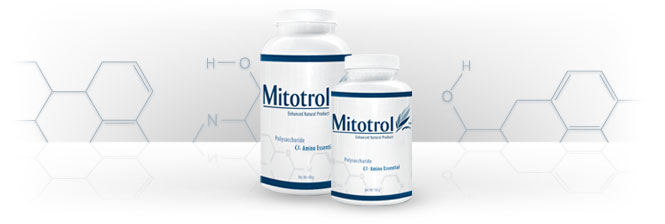Mitotrol
The Science behind the ingredients

Mitotrol contains three elements that give it nutritional power: polysaccharides, peptides, and spirulina blue-green algae. In order to understand the power and efficacy of Mitotrol, it is essential to understand the properties of each of its components.


Peptides are small chains of amino acids. Amino acids are units that are composed of proteins, elements vital to the functioning of our bodies, which represent approximately half of the dry weight of a cell. They are the proteins in charge of carrying out functions as diverse as catalysis, intercellular recognition, and also the duplication and replication of genetic material.
The proteins that carry out functions inside our bodies are held together by our cells using the information contained within our DNA. They create different amino acid sequences, amino acids being the essential units that compose proteins. The sequence of these amino acids determines characteristics such as shape, function and interaction with other proteins.
There are 20 different kinds of amino acids that make up our proteins, and that are found within all living things, be they animals, proteins, bacteria, etc. All except for nine of these amino acids can be produced by our bodies. These are known as essential amino acids, which should be included in our diets. The proteins in our bodies are constantly being renewed, and many of the amino acids that make them up are recycled. Nevertheless, recycling is 100% effective, but requires that a certain amount of proteins be consumed so that our required amino acid levels are met. In some cases, such as during a growth spurt, more proteins may be required.
The proteins we consume in our diets are used for one of two things:
- Providing the components necessary for the synthesis of new proteins, covering our amino acid requirements.
- The generation of energy. Approximately 15% of the energy used by our body comes from proteins.
Creation of new proteins means more energy and cellular health, which in turn means a better quality of life.
REFERENCES:
-Alberts, B., Bray, D., Lewis, J., Raff, M., Roberts, K., Watson, J. D. (1994) Molecular biology of the cell. Third edition. Pp 22, 73-74. New York. Garland Publishing, Inc.
-Rémésy, C., (2004) Alimentación y salud. 1ra edición. pp 22-23. Buenos Aires. Siglo XXI Editores Argentina, S.A.